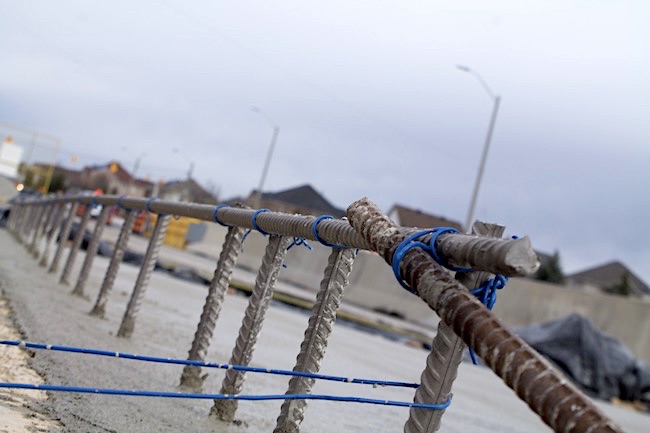
Ottawa has spent or allotted about a quarter of the funds from its $187.8 infrastructure plan
By David Kennedy
Construction InfrastructureWork is underway or complete on 48,000 separate projects from coast to coast to coast under the 12-year federal spending plan

The infrastructure spending plan includes work across the country in areas such as public transportation, green building and social infrastructure
OTTAWA—Canada’s minister of Infrastructure and Communities issued a state of the union May 9 on the country’s 12-year, $187.8 billion infrastructure plan, noting that about a quarter of the funds have either already been spent, or are earmarked for one of tens of thousands of projects coast to coast to coast.
“We have approved over 48,000 projects across the country, and I have seen firsthand how our investments in infrastructure are helping ensure access to clean water, protect the environment, help hard working Canadians move throughout their communities more efficiently, and create good middle-class jobs,” François-Philippe Champagne said.
As of the start of May, Champagne noted, Ottawa has spent or committed $42.3 billion.
“Almost all” of the nearly 50,000 projects to get funding so far are either underway or already complete, the government said. A $1.5 billion federal contribution to Calgary’s Green Line light rail project, $888 million to extend Vancouver’s SkyTrain and $333 million to build Toronto’s Finch West Light Rail project are among the highlights. A long list of other multimillion-dollar projects and a virtually countless ledger of smaller-scale jobs have been green-lit.
Unsurprisingly, Ontario has received the largest portion of the funding so far at $12.2 billion. Quebec, Alberta and British Columbia follow at $6.7 billion, $6.5 billion and $5.6 billion, respectively.
But the federal government’s infrastructure spending plan has not moved forward seamlessly. The building program has faced criticism for the slow rollout of funds essentially since it stepped out of the gate in 2016.
Ottawa has blamed lower tiers of government for some of the issues, noting that if cities and provinces aren’t prepared to get to start on certain jobs, the federal funds can’t force work to begin. Meanwhile, last year’s budget also revised the plan, reallocating much of the heavy spending toward the end of the 12-years. With the dollars being pushed back as opposed to quietly removed from federal balance sheets, the construction industry has remained optimistic in spite of the delays.
The Liberal government’s track record on infrastructure is expected to factor highly in the upcoming fall election. Opinion polling by Angus Reid, continually puts government spending among the top several issues for voters.
Look out for On-Site’s 2019 Infrastructure Report in our upcoming August issue. We’ll be taking a much closer look at how the federal plan and other infrastructure construction across the country is faring.




